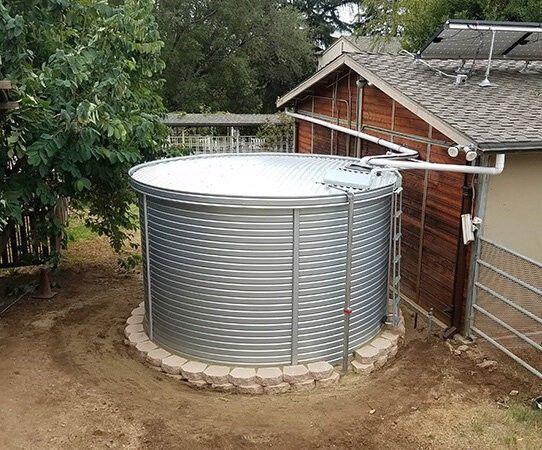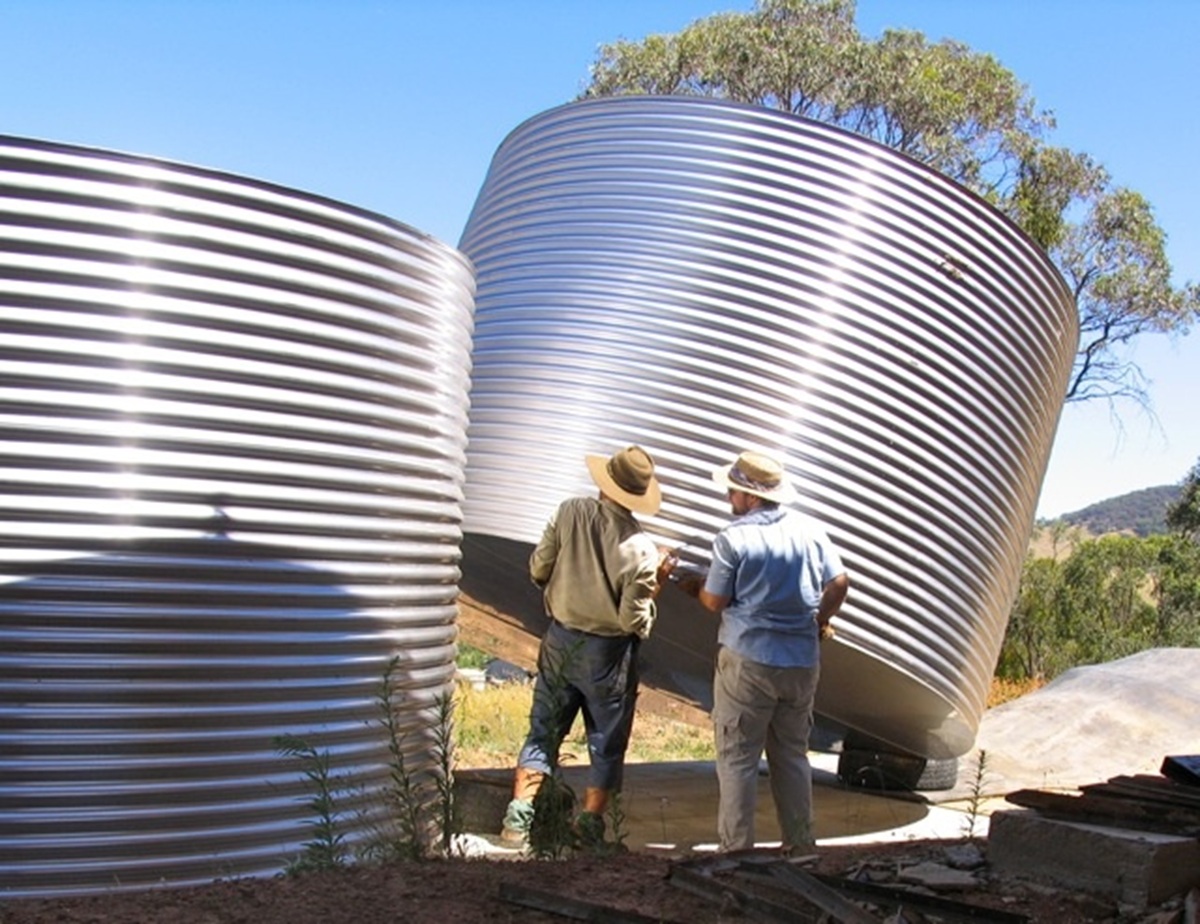Round Steel Tanks: Long-Term Solutions for Water Storage

Have you ever thought why Australian farms, businesses, and homeowners are turning in large numbers to round steel tanks for water storage purposes? Why do they prefer these tanks over plastic, concrete, or fibreglass tanks?
Across Australia, where droughts and water restrictions are common, reliable water storage has become more essential than ever. Whether you are managing a rural property for running a business that depends on a steady water supply, or simply wanting to reduce reliance on mains water, choosing the right tank is crucial. All the many possibilities, round steel tanks are the best option due to their strength, durability, and superior value for the money. These are not storage containers; they are long-term investments in water security that can last families and businesses for decades.
In this guide, we’ll explore what makes round steel tanks superior, their impressive lifespan, sizing tips, installation and maintenance essentials, suitability for drinking water, and even their environmental benefits. By the end, you’ll have a clear picture of whether a round steel tank is the right solution for your property.
Why Round Steel Tanks Are Superior to Other Options
The durability of round steel tanks also comes from their material and their shape. The round design is greater than aesthetically pleasing—it spreads internal water pressure evenly over the walls, which discourages weak spots and discourages leaks or failure. Rectangular tanks, on the other hand, are more susceptible to stress cracking.
Compared to plastic tanks, steel tanks have a number of distinct benefits. While plastic appears cheap at first, it is susceptible to damage from UV, can become brittle with age, and tends to develop algae growth when subjected to sunlight. Steel tanks, particularly those which have protective coatings, withstand these issues well. They don’t leak chemicals into water, can be made in much higher capacities, and continue to be structurally intact even under Australia’s extreme weather conditions.
Concrete tanks are strong but heavy, hard to move, and expensive to install. Fibreglass tanks can be light but never equal the long-term resilience of steel. That is why steel is still the benchmark for serious water storage.
The Lifespan of Round Steel Tanks
One of the most impressive features of round steel tanks is their longevity. With proper care, they often last 30 to 50 years, and in many cases even longer. Across rural Australia, there are examples of tanks from the 1970s still performing reliably today.
This strength is provided by top-grade steel with the benefit of contemporary protective coatings and linings. A sacrificial anode system, which prevents corrosion, is included in many tanks to add to their longevity. Although the initial cost of the steel will be higher, the cost-per-year of use will generally be significantly lower than plastic or fibreglass products.
Selecting the Proper Size Tank
Choosing the right tank volume is not as easy as purchasing the biggest tank possible. Rather, you need to start by figuring out your water consumption. Households use 200–300 litres per person per day on average, but this may depend on gardens, pools, or commercial activities.
Livestock needs on rural properties also must be accounted for sheep usually eat about 40 litres daily, while cattle can need over 100 litres.

Second, check your rainfall and collection capacity. Calculate your roof catchment area times the average yearly rainfall in your area to get potential water harvest. Preferably, your tank should be filled with three months of water to sustain dry periods, but most property owners use six months for added protection.
Installation: What to Expect
Round steel tank installation needs to be prepared carefully. The tank has to be positioned on a level, stable base. A reinforced concrete slab or a well-compact crusher dust base extending at least 300mm past the tank’s footprint is recommended by most professionals. Poor preparation of the base is the number one reason for tank failure, so don’t skimp here.
The actual installation process is relatively simple and typically takes one or two days. Tanks that are larger might need for the use of cranes to install them. Inlet and outlet pipes are connected by installers, mosquito-proof screens are fitted, and pumps or filtration systems are installed if necessary. Although smaller tanks might be installed by competent property owners themselves, professional installation is advisable for all tanks larger than 25,000 litres to guarantee safety as well as adherence to regulations.
Maintenance Tips for Long-Term Performance
Among the main benefits of steel tanks is their minimal maintenance needs. Regular maintenance usually consists of:
- Annual cleaning of gutters and leaf filters.
- Verifying the mosquito screens and first-flush diverters.
- Visual inspection for surface rust or coating damage and repainting as necessary.
- Replacing sacrificial anodes every 3–5 years.
Safe for Drinking Water
Round steel tanks are commonly used to store drinking water. Good-quality manufacturers implement food-grade liners and coatings, meaning stored water for safe and clean.
To sustain drinking water quality, residents should have first-flush systems installed to direct trash, mosquito-proof screens to keep insects out and the right filters or UV treatment systems. Steel tanks are offer clean, consistent water for families, businesses, and agriculture with proper installation.
Environmental Benefits of Round Steel Tanks
In the environmentally aware world of today, round steel tanks provide significant sustainability advantages. Steel is among the globe’s most recycled materials, and the tanks are predominantly produced from recycled content. The tanks, when their useful life comes to an end, are 100% recyclable.
Conversely, plastic tanks tend to go to landfill, and concrete tanks do not lend themselves to easy recycling. Steel is the circular economy choice, making it both functional and sustainable.
Conclusion
For long-term water storage, round steel tanks are unmatched value. Their greater strength, remarkable 30–50-year life expectancy, drinking water suitability, and low maintenance requirement make them the obvious choice for Australian residents. Although the initial price is more than other solutions, the long-term cost savings, dependability, and reassurance are worth every penny.
Add in their environmental benefits, and the argument for round steel tanks is all the more compelling. Whether rural farmer planning ahead for drought, business looking to guarantee water supply, or homeowner seeking environmentally friendly water solutions, a steel tank offers the strength and performance you require.
Akshay Sharma
Latest posts by Akshay Sharma (see all)
- Round Steel Tanks: Long-Term Solutions for Water Storage - September 19, 2025
- Embrace the Culture: Syna World Hoodie and Syna World Tracksuit UK - September 13, 2025
- Comfort and Style: The Best Boys Hoodies for Active Kids - September 10, 2025
- Why Every Digital Marketer Needs a Free URL Extractor in Their SEO Toolkit - September 4, 2025
- Family Friendly Singapore Trip from India – Tips & Expenses - September 3, 2025
